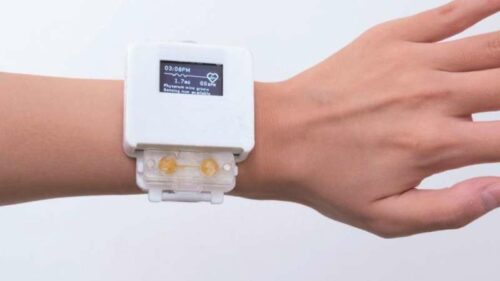Researchers have developed an eco friendly electronic device that helps the user emotionally as it contains a living organism.

With introduction of new technologies in the market, the older versions turn into junk and are tossed aside. This disposability leads to rising levels of electronic waste—the fastest-growing category of waste, with 40 million tons generated each year.
Jasmine Lu and Pedro Lope, researchers at University of Chicago wondered if they could change that fickle relationship by bringing devices to life—literally. They used the electrically conductive single-cell organism known as “slime mold,” to create a watch that only works when the organism is healthy, requiring the user to provide it with food and care.
The watches were designed and built by Lu to tell time and measure the wearer’s heart rate. However, the second function is dependent upon the health and unique characteristics of Physarum polycephalum, a species of slime mold sometimes called “the blob,” for its rapid growth, resilience and curious maze-solving abilities.
The organism is placed in an enclosure on the watch, and the user must regularly feed it a mixture of water and oats to induce its growth. When the slime mold reaches the other side of the enclosure, it forms an electrical circuit that activates the heart rate monitor function. The organism can also enter a dormant state when not fed, allowing for revival days, months, or even years later.
Researchers conducted a study with five participants who wore the watch for two weeks. Over the first week, the users cared for the slime mold until the heart rate monitoring was enabled. Then for the second week, the researchers asked participants to stop feeding the organism, causing it to dry out and disrupt the heart rate function.
The researchers found a high level of attachment to the watch, with some users saying it felt like a pet—even naming it, or putting their partner in charge of the feeding when they got sick. This also depicted the users emotional response when they were asked to neglect the organism, expressing guilt or even grief.
Reference : Jasmine Lu et al, Integrating Living Organisms in Devices to Implement Care-based Interactions, The 35th Annual ACM Symposium on User Interface Software and Technology (2022). DOI: 10.1145/3526113.3545629





